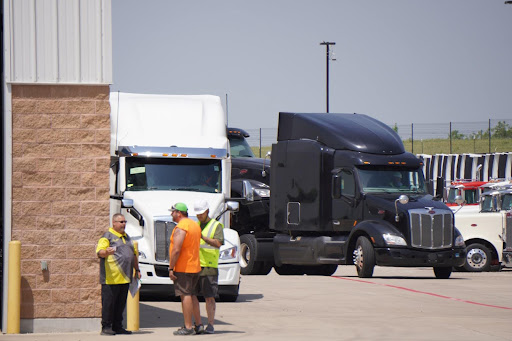Let’s clear this up: your back office isn’t an office. It’s the system you build to make decisions, protect your money, and stay on the road legally. It doesn’t need to be big—but it does need to be tight. The three main roles of your back office are:
-
Financial Visibility – So you know what each truck is making (or losing).
-
Compliance Control – So you don’t get sidelined by fines or failed audits.
-
Operational Clarity – So you can grow without chaos.
If your current setup involves a legal pad, a shoe box of receipts, and a mental note that something’s due “sometime this month,” you’re already behind.
Every successful small carrier knows their breakeven rate down to the penny. And that starts with having a real financial system, not guesswork.
Reflection Moment: If you can’t answer “How much profit did I make per truck last month?” in 60 seconds, you need better visibility.
You don’t get a pass on DOT compliance because you’re small. The fines hit just as hard. And worse—your insurance rates and CSA score can spiral fast if you’re not buttoned up.
-
FMCSA registration log (MC, DOT, UCR, MCS-150)
-
IFTA folder with quarterly checklists
-
Centralized storage for:
Use Google Drive or Dropbox to keep everything searchable and backed up. Use calendar alerts for expirations. Miss nothing.
Reflection Moment: Set one recurring calendar block each Friday for a “compliance sweep” so you never fall behind.
Paperwork is the silent killer of growth. The more time you spend chasing down BOLs and resending rate confirmations, the less time you spend doing what pays: running trucks.
-
BOL Upload Flow: Driver → scanner app → shared folder
-
Rate Confirmation Tracker: Spreadsheet or TMS with rate, broker, and load info
-
Invoice Sent Log: Track invoice date, payment terms, and due date
-
Broker Email Templates: For follow-ups, disputes, and rate confirmations
Free tools like Adobe Scan, Gmail templates, and a simple spreadsheet can replace hours of admin time. If you can’t afford a TMS, build your own with Airtable or Google Sheets.
Reflection Moment: Every hour saved on admin is one you can spend quoting higher-paying loads or onboarding better brokers.
Too many small carriers treat broker relationships like one-night stands—book a load, hope it pays, move on. That’s not a strategy.
-
Payment terms for every broker you work with
-
Payment history (on-time, late, issues)
-
Red flags (chargebacks, changed rate cons, poor communication)
-
Volume history and seasonality
Use a tracker (spreadsheet, Airtable, or CRM) to log every interaction. Use DAT or Truckstop’s data tools to assess repeat volume before you call. Stop treating every broker the same.
Reflection Moment: If a broker’s rate is always low and their payment always late, you’re not being flexible—you’re being exploited.
If you’re spending more than 6 hours a week doing admin tasks, you’re ready to start outsourcing. Not everything needs to be done by you—and frankly, some of it shouldn’t be.
-
IFTA prep
-
Invoicing and collections
-
Permit renewals and filings
-
Maintenance reminders and DOT inspection scheduling
You don’t need a full VA—just someone who can log in a few hours a week and keep the wheels turning behind the scenes.
Reflection Moment: The goal is simple—free up your time to work on the business, not just in it.
Load boards are a tool—not a business model. Use them to fill gaps, spot trends, and test lanes—but don’t let them dictate your strategy.
-
See lane trends and compare RPMs
-
Find new brokers (after vetting)
-
Spot outbound strength before you deadhead
Reflection Moment: If you can’t explain your load board strategy without saying “I just look for what’s available,” you don’t have a strategy.
Your back office isn’t something you “get to later.” It’s the foundation. For a two-truck operation, you don’t need expensive systems or a full-time admin. But you do need structure.
If you want to grow beyond two trucks—or even keep both trucks profitable long-term—you’ve got to start treating the business like a business. That means tracking, organizing, and executing with intention.
The ones who win in this game don’t just out-drive the others. They out-manage them.
The post What a Real Back Office Looks Like for a Two-Truck Operation appeared first on FreightWaves.

